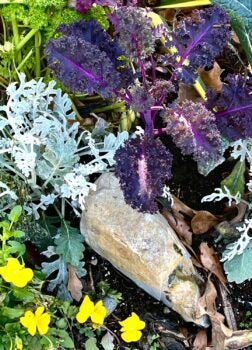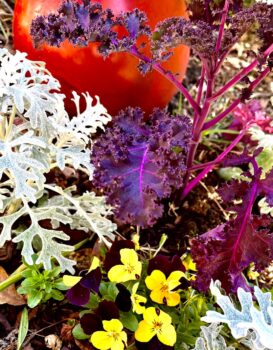Felder Column
Published 8:20 pm Monday, February 5, 2024
Are you sitting on your garden hands waiting for better weather, or taking the winter season by the horns and enjoying what we have in the here and now?
Being a “gather ye rosebuds while ye may” gardener, I don’t pine for spring. Instead, I’m taking advantage of sunny winter days, admiring what I planted earlier just for this season and thinking of what I ought to be doing now and later in the spring, which is just weeks away.
I do have some cleanup chores, after losing some snapdragons, Swiss chard, and other half-hardy plants in last month’s sudden hard freeze. I tossed their remains onto the compost, spread a couple of bags of mulch to neaten up the areas, and went shopping for new stuff to get me through the rest of the winter. I picked up more colorful, cold hardy kale, parsley, violas, and pansies at the garden center, and gray-foliage dusty miller which complements everything. Think I will make up a pot of those and cute accessories for the front porch.
I neatened things by picking up fallen branches for fire bowl kindling, raked leaves around shrubs for mulch and blew the rest onto the compost pile along with the partly collapsed. mushy pumpkins that had decorated last Autumn’s front walk. Pried up some tree seedlings while the soil is soft and before they get too rooted to pull easily and emptied soil from last summer’s pots into a trashcan to mix with fresh stuff for replanting the pots later. (Yes, it is okay to reuse old potting soil. And no, you don’t have to scrub the pots clean.)
Here’s something for folks looking for relief from lawn expense and frustration: During a walk around the neighborhood looking for early spring wildflowers in mow-what-grows lawns, I found a few dandelions and lots of henbit, an edible mint relative with tiny orchid-like purple flowers. It is downright pretty if you look at it up closely, and a major source of nectar for bees and other winter insects in a season with little else for them.
I know a lot of folks still feel socially pressured to have a weed free lawn, but that is so 1960s, from when herbicides started being pushed hard by companies calling wildflowers “the enemy.” No problem having a well-maintained lawn, but the trend is clearly towards leaving a few low-growing wildflowers here and there and viewing them as attractive and beneficial. In most cases they are gone before midspring anyway.
In an age when it seems like nobody can compromise on anything, I have a good suggestion: create a small, clearly edged weed-free throw rug of well-maintained lawn, like a golf course putting green, and a larger, friendlier, easier to maintain area with low, mowable wildflowers like dandelions, henbit, wild onion, clover, violets, and even a few small bulbs including Tete a Tete daffodils and blue starflower (Ipheion). All of them disappear when it’s time to start mowing later.
If you simply must control non-grasses in the lawn, keep in mind that it is too late for pre-emerge herbicides, so use a liquid spray. Because they are harder to kill later when they get bigger and are in full flower, do it this month when weeds are still small and easy to control. A note of solid turf management advice: Keep weed control and fertilizers separate; wait till April to fertilize.
Meanwhile, I’m getting organized with seeds and supplies to start a few summer flowers and veggies later this month. For now, I’m more relaxed and able to enjoy the season at hand.
Felder Rushing is a Mississippi author, columnist, and host of the “Gestalt Gardener” on MPB
Think Radio. Email gardening questions to rushingfelder@yahoo.com.






